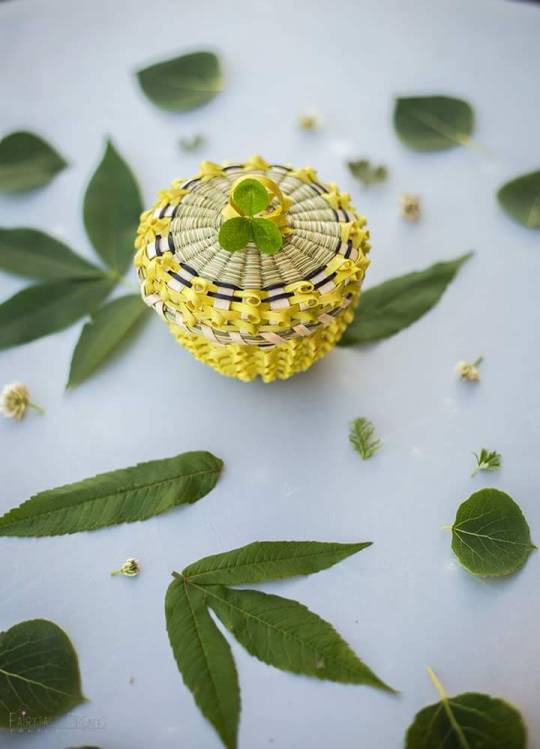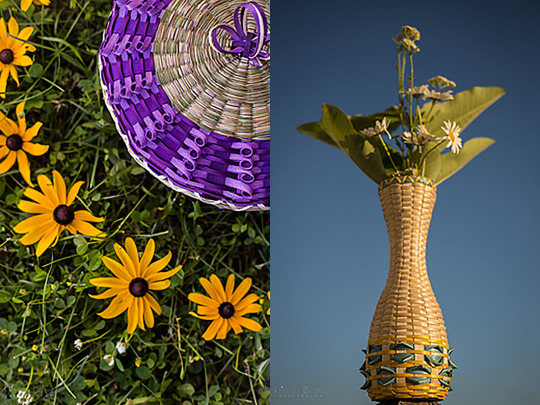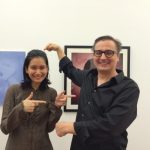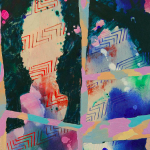Fellows at 30: Carrie Hill
“Our family will continue to become the ancestors of our future children and grandchildren. We will lay the path of basket knowledge for those who want to pick up the love of weaving.”
To continue NYFA’s 30th anniversary interview series we interviewed recent Fellow in Folk/Traditional Arts, Carrie Hill. Carrie weaves traditional Mohawk baskets that are used in both decorative and traditional settings.
NYFA: Prior to 2012 NYFA’s Artists’ Fellowship Program did not have a designated category for Folk/Traditional Arts. As a 2015 recipient of this award, what aspects do you think define Folk/Traditional artists as opposed to artists in other disciplines?
CH: What separates a Folk/Traditional artist from other disciplines is that in traditional art the skills needed to create the works of art are passed down inter-generationally, as opposed to going to an institution to learn the skills. This is not only a learned art but also an ingrained artistry throughout our family lineage. I learned traditional basketry from my aunt as opposed to a professional educator. My aunt didn’t see herself as a formal teacher. She learned how to weave by watching my great grandmother and my great grandmother learned from other members of her family. When I went to my aunt’s house at night to learn weaving skills, we would visit and she would tell me stories about basket making. She recalled hearing the echo of the splint being pounded throughout the community. As a child she would play with the splint and sweet grass scraps at my great grandmothers’ feet while she was weaving. It was hearing these stories that she told with such a fondness in her voice that really made me want to continue learning. I wanted to create those memories for my children and continue that legacy. These are not things you can learn in a standard classroom, but through family oral history. I am grateful that my aunt took the time to teach me all the skills I now possess to create my own works of art. Our family will continue to become the ancestors of our future children and grandchildren. We will lay the path of basket knowledge for those who want to pick up the love of weaving. It is our duty to restore that cultural knowledge as it is our identity and can be felt within each strand we weave.
NYFA: On your website you say that your aunt taught you to weave. What role does your family play in your practice today?
CH: Well, my aunt taught me everything I know about basket making from preparing the splint to knowing the types of weaves and curls to use, to harvesting the sweet grass needed for holding it all together. My husband has watched my growth over the years as an artist and has taken it upon himself to learn how to pound the Black Ash logs I need to continue weaving. My uncle also does splint pounding and I often obtain my splint from him too. My children come with me in the summertime to harvest the sweet grass, and can do this now without my guidance. My oldest daughter is practicing weaving and makes her own beautiful creations as well. I am pleased with this because she is securing basket making for the next generation. It is a traditional art form that I feel is important to pass on. It also creates a bonding time with her as we discuss different designs and ideas. I watch my daughter with pride as she weaves her creations, knowing that while she is using her own creativity, I helped nurture it by teaching her the skills needed to have her creative vision come to fruition. My family has also been my biggest support. They believed in my artistic vision when it was just a thought. They supported my decision to pursue being an artist full-time, despite the difficulties we may have at times. They have been by my side through this whole journey. They are my rock.

NYFA: In your experience, what venues cater to Folk/Traditional arts?
CH: One of my favorite venues that cater to traditional art is the Ganondagan Art and Dance Festival that happens in July in Victor, NY. Every year I look forward to being a vendor at this amazing event. Other venues include powwows, festivals, and some museums.
NYFA: Harvesting sweet grass seems very labor intensive, could you talk to us about how you gather your materials? How does that particular process factor into the final product?
CH: Harvesting sweet grass is very labor intensive. My daughters and I like to go early in the morning before the heat comes to start picking. You have to recognize what sweet grass looks like to be able to pick it. I’ve heard people say “Well it has pink roots, that’s how you know” and while this is true, it does have a pink root, or bottom of the shoot, you cannot see this when standing on top of the grass. Sweet grass has a kind of different green to it; it has a soft flowing billowy look, like hair or feathers. I think this is why it is often called “Mother Nature’s hair.” When my aunt first taught me how to pick sweet grass she brought me to a field about 20 miles from home. We trooped through thick weeds and trees to find the field where the sweet grass was. She showed me what sweet grass looked like and as soon as I could see it for myself, I was amazed at how much there was in the field. “It’s everywhere!” I kept saying. She laughed at me and we started to pick.
Harvesting sweet grass requires a lot of bending and crouching in order to get down to the root. It grows in bunches and you have to be careful to not pick the root. The grass is tube-like almost like a straw, so you have to carefully pull the grass from the bunch one by one as best as you can. Each blade of sweet grass is harvested individually so that there is less cleaning to do when you get it home. The terrain in which it grows is rough. The weather you pick it in is rough. If you don’t dress right you can get cut up and scratched up, or even get heatstroke from being in the sun. The harvesting season is in the summer months, so when you pick, you try to pick as much as you can, because you can’t just go to a store and buy sweet grass. It doesn’t grow in the winter, it isn’t ready in the spring, by the fall time it is burnt, or eaten, so the only time you can harvest it is in the hot summer months.
NYFA: Do you have any large-scale projects or happenings on the horizon, where we can see your work in person?
CH: Right now I am in the process of building my studio so that I can host classes for interested individuals or groups that wish to learn traditional basketry. Building this space will also allow me to focus more on my weaving and let me experiment with various techniques. A new studio will also free up space in my home and allow me to accommodate large custom orders.
Several of my baskets were just part of an exhibit at the Bertha V.B. Lederer Gallery at SUNY Geneseo. On October 24th I will take part in a basket-making symposium at the Ganondagan Historical site in Victor, NY. As far as upcoming shows, the future is wide open and I look forward to any opportunities that may present themselves to me. For the time being, my work can be viewed on my website, facebook page, or Instagram (@chillbaskets). I would like to take this opportunity to say that I am incredible grateful to the New York Foundation of the Arts for the Fellowship. This Fellowship has afforded me the opportunity to further my career as an artist and I am humbled by this honor.
Niawen (Thank You)

Follow the work of past and present NYFA Fellows on Twitter at #NYFAFellows30 and find out more about the activities planned for our 30th anniversary on our website. NYFA’s Artists’ Fellowship Program awards $7,000 grants to individual artists in New York State. Applications are currently open with a January 28 deadline.
– Madeline Scholl, Program Associate
Images: All images by Cassandra Blair of Fairytale Dreams photography





